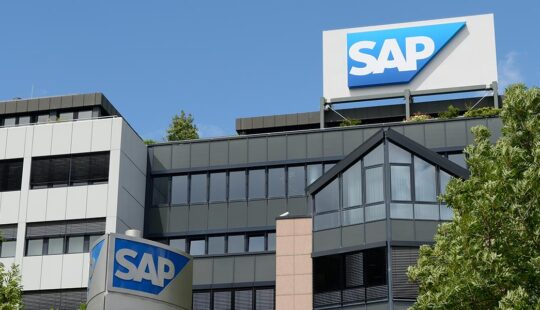When HR moves away from the traditional siloed approach and takes on a more proactive and decisive role in organizational growth, there are visible results. This is especially true in the post-pandemic scenario, where Chief Human Resources Officers (CHROs) and HR managers are key to attract top-notch, scarce talent.
Consider this: Global information services company Experian faced unusually high levels of turnover, about 4-5 percent higher than average. Rather than a typical reactive approach, the company’s HR team responded in a unique way. They built a predictive model with 200 attributes, including team size and structure, manager performance, length of commute, and other factors contributing to the flight risk.
This model was rolled out across multiple geographies, and the results were stunning! Some interesting insights gleaned from analytics – when a team member moved away from the office, it increased the chances of quitting. When such insights were combined with best practices, the attrition rate was lowered by 2-3 percent over an 18-month period. This not only improved employee efficiency and morale but also saved the company nearly $10,000,000.
Moving from reactive to proactive
Clearly, an HR management system that centers around uniformity and bureaucracy will be rendered obsolete in the post-pandemic era. Taking its place should be a strategic human resource planning model that is flexible, responsive, and built around the future of work: Increased connectivity, rapid automation, lower transaction costs, and workforce demographic shifts. But to embrace this new human resource management model, senior HR managers and CHROs must reimagine the core tenets of their practice and have a strategic approach to staffing. Here’s how:
- Gain a deeper understanding of company objectives, purpose, and culture
CHROs need to build a culture where all employees understand the ‘why’ of the business and how it connects to the big picture. But for this, people leaders themselves need an in-depth understanding of the organization’s culture and overarching values. They need to ask questions such as:
- What is the sole reason for our company’s existence?
- Where can we have a positive, unique impact on the community and the world at large?
- How can the employees’ contribution tie into organizational purpose and values?
These questions also serve as a compass during recruitment. Employees today want to work with companies whose values and purpose align with their own. A survey by New York Times shows that employees who can find deeper meaning in their work are more likely to stay on at their organization.
- Leveraging data to take the guesswork out of HR
With the vast amount of data available throughout the various touchpoints in the employee lifecycle, HR can make faster and better decisions with actionable insights and reporting. By leveraging historical data, analytics, and workforce planning tools, CHROs can forecast trends, manage recruitment, and handle attrition more efficiently.
For instance, one of the most crucial but time-consuming responsibilities for HR is recruiting the right person for the right role at the right time. Using data, HR can better understand the company’s hiring needs and the exact responsibilities for each position. This can streamline the recruitment process and eliminate expensive over hiring while ensuring sufficient employees to serve the customer base.
Leveraging data for people and talent management can offer the following key benefits for human resource planning.
- Sharper Insights – Data can be used to get valuable insights into employee behavior. It can also help answer some pressing questions that today’s HR leaders ask: What motivates employees? What are the leading causes of attrition? How to increase performance and improve employee engagement?
Tools such as employee satisfaction surveys, assessments, and exit interviews can help organizations identify why people leave and how to increase job satisfaction. The big ones have been doing it for some time now. For instance, Xerox reduced the attrition rate in its call centers by almost 20% by using big data to find out why employees leave in the first place. Google and Credit Suisse are among the many leading companies routinely using predictive people analytics to identify employees most likely to quit- and then make them counteroffers before they do so.
- Training and development- Accurate performance analysis can indicate where training is needed and specific skills and topics to be covered. Analysis of such data helps HR managers improve the training programs too. Using cloud-based analytics, managers can get real-time updates on employee participation and engagement. They can also use those insights to adapt the methods as the training progresses. This is especially useful for the remote model of work.
- Hiring accurately- The recruitment process, until recently, was primarily based on intuition and guesswork. According to the U.S Department of Labor, the cost of a bad hire is at least 30 percent of the employee’s first-year earnings. When non-productive hires don’t pull their weight, good employees must make up for them, getting burned out in the process. This is where modern hiring and vetting tools, that use the candidate’s historical data to predict future outcomes, come into the picture. For example, Wells Fargo uses predictive analytics, that uses verifiable biometric data to hire candidates who are likely to perform better and stay longer.
- Performance management – Measuring performance is a highly complex process. It isn’t easy to understand why some employees consistently outperform others or how to evaluate the non-quantifiable work done by an employee. Today’s performance management systems include multiple interconnected processes and documents. The right analytics tool can use these datasets to provide a holistic view of the employee’s performance, enabling easier identification of areas of improvement, faster learning, and better business outcomes.
- Workforce analytics – It uses algorithms and employee data to provide ROI evidence for resource management decisions such as future forecasting. Talent analytics helps by evaluating the existing trends and offering an inventory of skills within the organization, studying labor shifts, and predicting future gaps. It can also determine the factors that indicate employee engagement and job satisfaction to sustain a high-performing workforce or flag upcoming talent for succession planning.
- Automate HR operations and planning
To empower HR and HR leaders, there must be a shift from operational roles to strategic positions. HR departments still spend a significant amount of time and resources on transactional, routine activities. By leveraging next-generation automation tools and solutions such as HRIS (Human Resources Information System) system software and HRMS (Human Resources Management System) software, HR can provide enhanced service and improved employee experience. Here’s how:

- Process automation- Providing direct access to information or transactions online and simplifying processes enables process automation, leading to informed decision making.
- Offloading lower-value administrative jobs- HR administrative services such as payroll and benefits need to run reliably and consistently, yet at a low cost. This can be done by either adopting new digital tools that consolidate your legacy systems or outsourcing the work to external vendors/partners.
- Leading-edge edge automation- Next-generation automation is replacing several HR processes by building on core HRMS and HRIS software. Robotic Process Automation (RPA) and Natural Language Processing reduce cross-functional workflows and streamline the old-school onboarding process. Bots are helpful allies here since they can access multiple systems, manage an intelligent workflow, and handle the complete onboarding process. Onboarding time can be reduced from weeks to days, with the spin-off benefits of lower risk of manual errors and a more streamlined journey for each recruit.
- Focus on employee experience
Employee experience and satisfaction are essential to measuring HR’s operational effectiveness. In the new normal, this means ensuring a smooth experience that is consistent and similar for all employees (both on-site and remote). HR leaders should understand their needs, pay attention to factors that make work enjoyable or tedious, and enable them to complete transactional tasks online quickly. In fact, as employers get increased visibility into the personal lives of their employees, there is a need for a shift to supporting the employee life experience, says Gartner.
- Review and Evaluate HR plan
As organizations continue to evolve and become digitally agile, HR also needs to review and re-evaluate its planning and role constantly. The human resource planning process is now strategic to expand the focus and extend its influence beyond the operational and the transactional to the enterprise ecosystem. Instead of focusing merely on technology or tools, the human resource planning process can start with employee experience and engineer a strategy that keeps this at the center. The result will be more fruitful overall.
We are no longer inching towards a New Normal, we are already in one. And HR leaders have to be strategic thinkers, constantly looking forward, assessing organizational needs, and coaching employees to gear up for this change. With the help of SAP’s Human Capital Management solutions, HR leaders can stay tech-savvy and strategic in their human resource planning and can successfully deal with an increasingly ‘restless’ workforce, used to the work-from-anywhere freedom!


